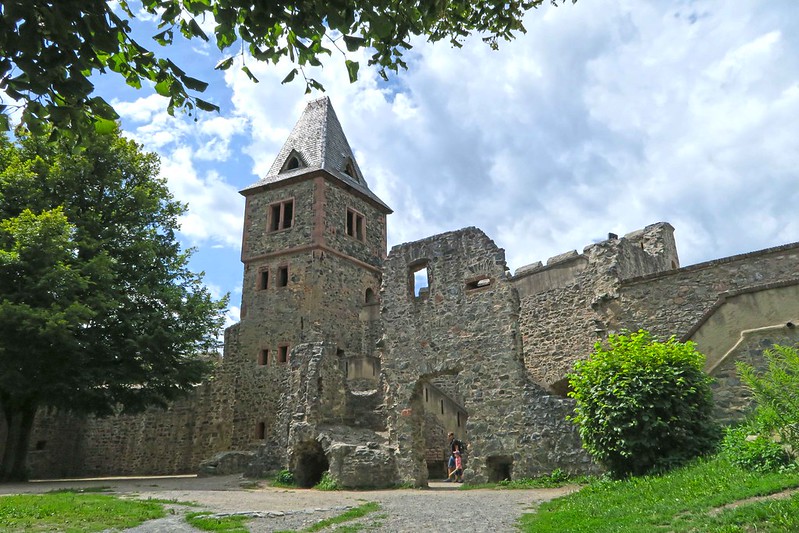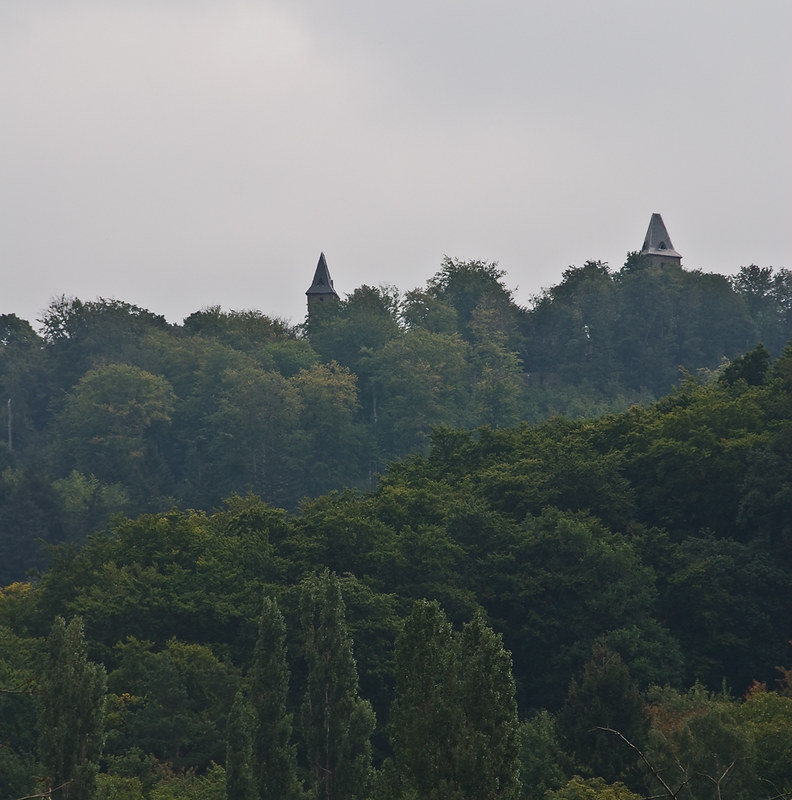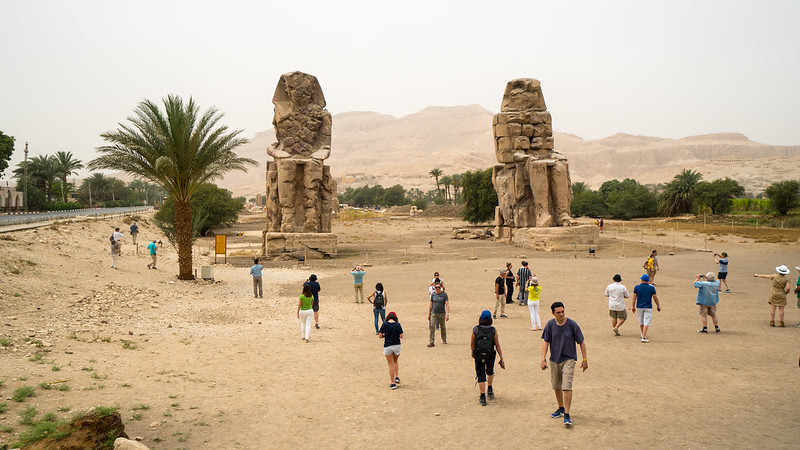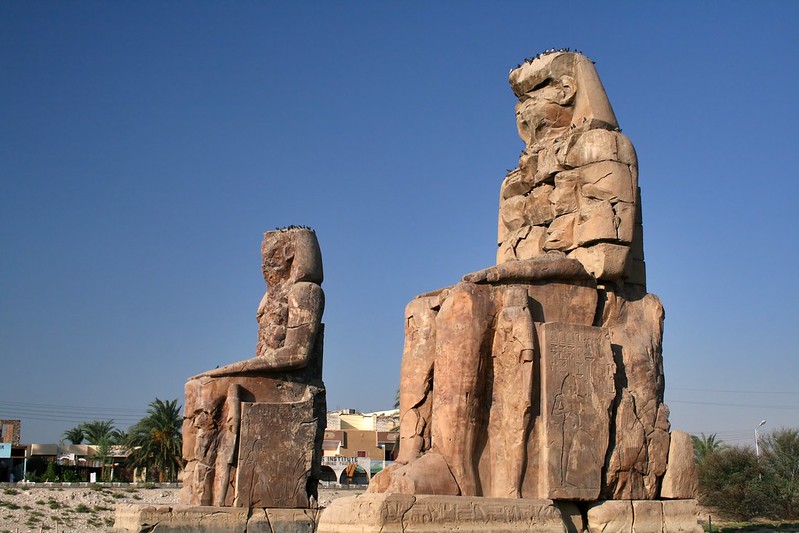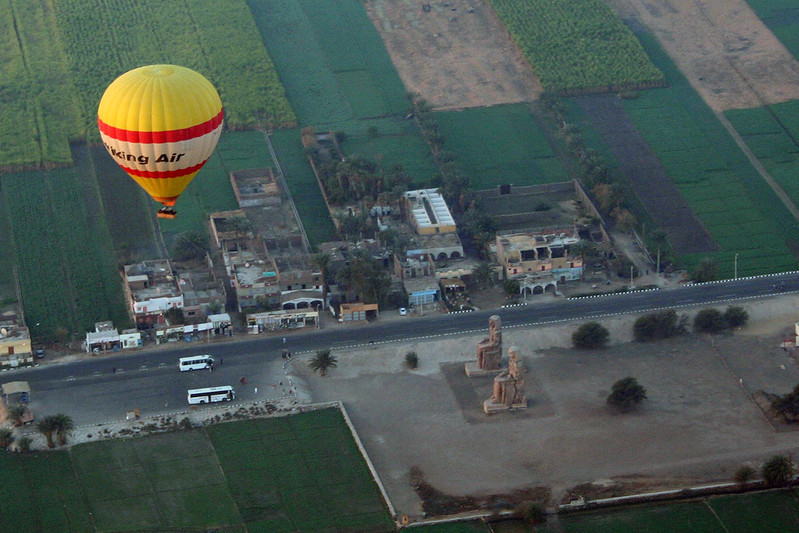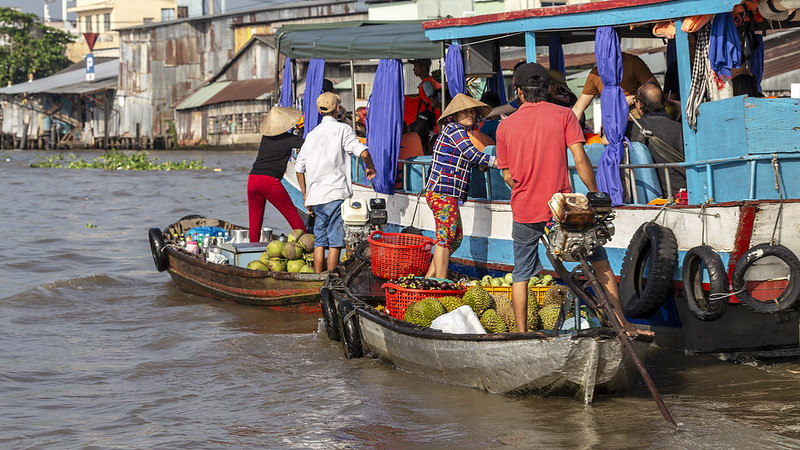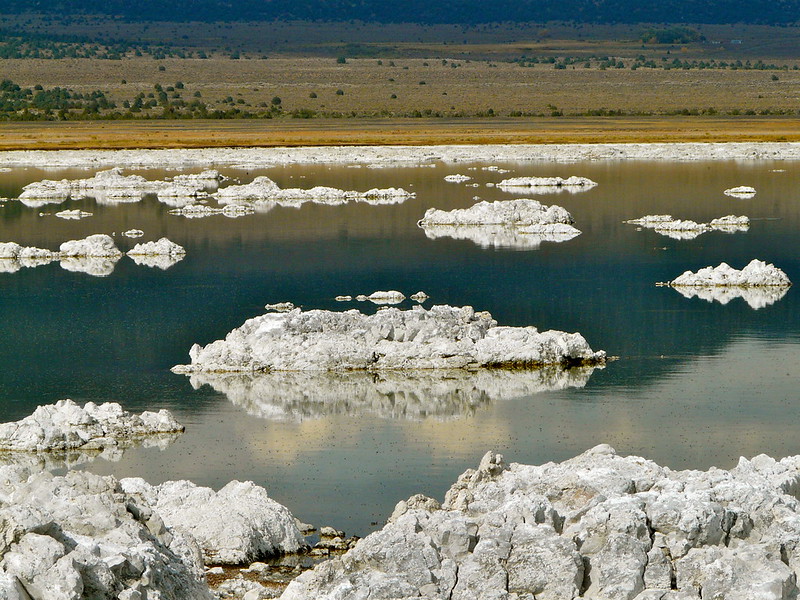A Floating Market can be described as a market that appears on the river, the main traffic route—a place where both the buyer and the seller use the boat to transport their goods. The floating market is typically located in sections of the river that are neither too broad nor too narrow. The river section must not be too wide or too short. Many floating markets were established in areas where water transport was necessary. They are primarily tourist attractions and can be found in Thailand and Indonesia, Vietnam, India, and Sri Lanka.
Floating Market – Southeast Asia
Guava floating Market, Bangladesh
Kurian, in Swarupkathi, is a 200-year-old floating marketplace that has been a tourist attraction and the most scenic floating market. The guava floating market is an exceptional market. Every day, hundreds of tourists come from worldwide to see the beautiful market and the surrounding area. The guavas are harvested from nearby orchards by farmers who then transport them to the river in their boats. Every day, hundreds of these boats are filled with guavas and brought to the river. All trade takes place over the water.
Floating Market Thailand
Floating markets in Thailand are popular tourist attractions. They allow both domestic and international tourists to enjoy the riverside shopping culture. Today, floating markets are mostly kept in operation for cultural and tourism purposes. In the past, Thailand's vast network of waterways was the primary means of transporting goods throughout the country. Vendors would gather in specific spots, and locals would travel by water or land to buy various household goods. Floating markets became obsolete as land transportation improved. Thailand market boats are an integral part of Thailand's history. These are some of the places you can still shop from the old days.
Floating Market Bangkok
Amphawa floating market
Floating river market Thailand, Although Amphawa floating marketplace is smaller than Damnoen Saduak floating market, it is still authentic and attracts almost exclusively Thais. Although it is an evening market, some stalls can be opened at noon. It is open from 1600 to 2100 on Friday, Saturday, and Sunday. It is located in the Amphawa District of Samut Songkhram Province, 72 km from Bangkok. Due to the popularity of the area, food stalls have sprung up along the river banks and extended into surrounding buildings. A popular activity in Amphawa District, especially during the waxing moon nights, Bangkok floating market tour is renting a boat and viewing the flickering fireflies at night.
Damnoen Saduak floating market
Riverside market Bangkok, Everybody wants to visit Damnoen Saduak, the oldest and biggest floating market in Thailand, to learn more about the vibrant local life. Discover the unique features of this floating market in Bangkok. A unique floating market can be found on the river, located in the middle of Bangkok. Damon Saduak, which in Thai means "convenience marketplace," is a market that meets at the Damnoen Saduak District, Ratchaburi Province, 100 km southwest Bangkok. Visitors will enjoy shopping in this market as it is the busiest and one of the famous floating markets Bangkok.
Doi Wai floating market
Thailand river market, The Don Wai floating market place is located near Bangkok in Sam Phran District of Nakhon Pathom Province along the Tha Chin River. The floating water market Thailand is known for its variety of food, including stewed Java barb and salty soup and Chinese stewed duck. Moreover, it is not far from one of the most prominent temples of Nakhon Pathom, Wat Rai Khing, which can be reached by boat on the Tha Chin River.
Taling Chan Floating Market, Bangkok, Thailand
The float life of Taling Chan floating marketplace, also located in Bangkok, can be found near Khlong Chak Phra, just before the Taling Chan District Office, adjacent to the Southern Railway Line. The market is closed on Saturdays, Sundays, and public holidays. Also, rent a boat to get to other nearby attractions, like floating markets, or pay homage at Luang Pho Dam (an ancient sacred Buddha image located at Wat Chang Lek). This floating market is also one of six designated no-smoking areas within the Bangkok project for 2019.
Bangkok floating market Thailand
Kwan Riam Floating Market, Minburi, Bangkok
Thai floating market, Kwan Riam floating market place is located in Ain Min Buri District of Bangkok, close to Khlong Saen Saep and one of the most famous floating markets in Thailand. Its name derives from the names of characters in a Thai romance-drama novel titled Plae Kao. Khlong Saen Saep was used for the background of this novel.
Thailand Market
Khlong Hae Floating Market
Thailand water market, Khlong Hae floating market is the first and only floating market in Southern Thailand presently. It is located in Hat Yai District in Songkhla Province and blends Thai Buddhist culture with Muslim cultures of floating Thailand.
Indonesia floating market
Lok Baintan Floating Market, South Kalimantan, Indonesia
The most well-known traditional floating market is Lok Baintan, which is located in Banjarmasin, South Kalimantan's capital. Lok Baintan is located along the Martapura River, approximately 30 to 45 minutes by car or 50 to 60 minutes by boat from Banjarmasin. This market, named after Lok Baintan village, is dynamically moving along the river stream. It started at the Lok Baintan village's upstream and ended at the river's downstream. Jukung, a traditional wooden boat, is the main mode of transportation at this market. Like any other market, traders will approach you with fruits, breakfast foods (Nasi Kuning and Soto Banjar), coffee or tea, local souvenirs and many more.
Floating vegetable market on Dal Lake, INDIA
Floating vegetable market, Tourists in Kashmir's valleys are most interested in the Sabji Bazaar, which is a vegetable market. This is an informal market in which individual sellers gather at the lake's centre, district Srinagar. It is the second-largest wholesale market in the world after the one in Vietnam's Mekong delta. The lake does not have any permanent shops. Local traders operate their normal business from this floating market using their boats. The market does not encourage partial or selective selling. It focuses on wholesale sales. You can find tomatoes, turnips and leafy vegetables among the items on sale. They are all grown in this rich ecosystem. This market also sells the popular Kashmir flower.
Floating market Vietnam
Floating market in Can Tho, Mekong Delta, Vietnam
Vietnam floating market – The Mekong Delta's three largest floating markets are Cai Rang Floating Market, Can Tho City, Vietnam and Cai Rang Floating Market. There are many boats that can be seen at the market's shops and stalls. You will be amazed at how busy and vibrant the Cai Rang floating marketplace is located in Can Tho province. Larger boats anchor in the morning and create lanes for smaller boats to weave in and out. You will find hundreds of boats laden with bananas, papaya, and pineapple on the waterway.

